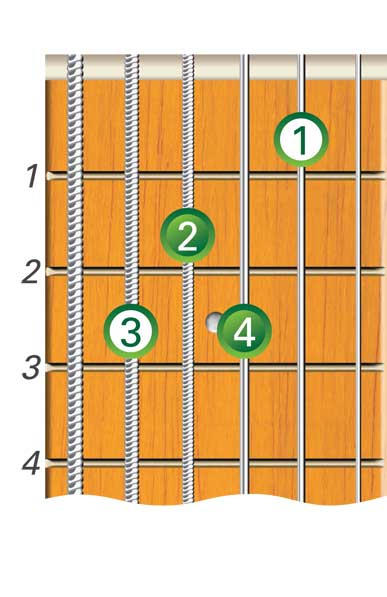
Moveable 7th Chords
Bar chords are probably the most common example of moveable chord shapes. However, any chord which does not contain open strings can be moved to any position on the fretboard. Most moveable chord shapes follow the five basic forms found in open chords, i.e. C, A , G, E and D. (For more detail on the five basic forms see Progressive Funk Guitar Method). Because root 6 bar chords follow the basic shape of an open E chord, they can be described as E form chords. Root 5 bar chords follow the basic shape of an A chord, so they can be described as A form chords.
It is possible to move other major chord shapes by the use of a first finger bar, but since 7th chords are more useful in Blues we will be concentrating on moveable 7th shapes in this lesson. A moveable D7 shape can be created by using the first finger on the root note on the 4th string. With this shape, the 5th and 6th strings are not played.


This example uses the moveable D7 form as chords I, IV and V in the key of E. The A7 chord can be found at the 7th position, while B7 will be at the 9th position.

If you mute out the 1st and 6th strings, the basic C7 chord shape becomes moveable to any key. In this form the root note can be found on both the 5th and 2nd strings.


Here is the last four bars of a Blues progression in the key of A, using the C7 form. Be careful with the change in rhythm in the fourth bar.

This next chord shape is a variation on the C7 form. The root note in this shape is on the 2nd string. Like the D7 form, This one use only the first four strings.


Now try this progression using the alternate C7 form.
